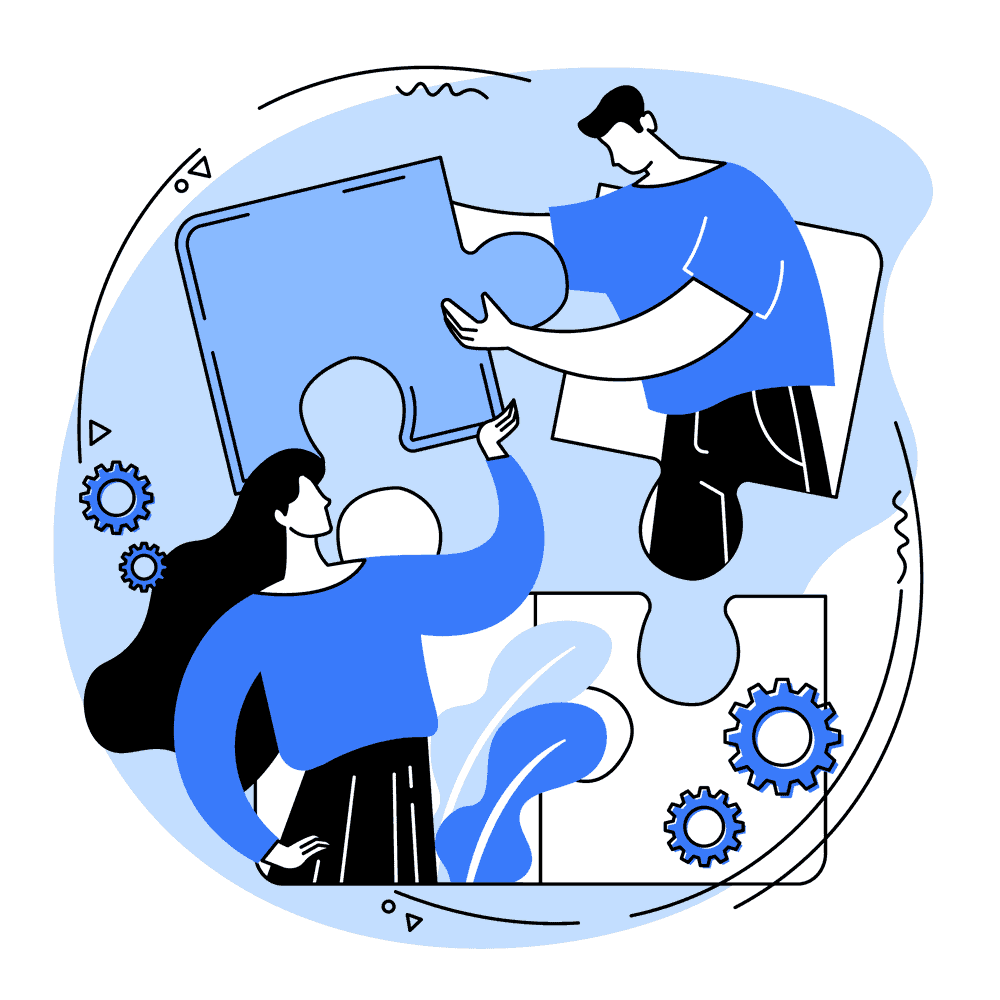 Humans are impressionable beings. Our environment highly influences the way we interact with the world. Every decision that we make has its root in our early experiences and the surroundings we live in.
Humans are impressionable beings. Our environment highly influences the way we interact with the world. Every decision that we make has its root in our early experiences and the surroundings we live in.
In fact, it wouldn’t be wrong to say that most of the decisions we make are not fully ours, but rather an amalgamation of personal choices and external influences originating in our childhood, family, friends, etc.
Today, much of what we do is linked to technology. Many of us are woken up by technology; it reminds us to eat food, drink water, monitors our health, helps us shop, and even puts us to sleep. This has created a shift in human behavior. Internet addiction is on the increase and its impact is so high that it even leads to symptoms of personality disorders in people.
Cyberpsychology, a subfield of psychology, has emerged to understand the relationship between human behavior and digital technology. In this article, we take a look at this field of psychology and delve into it to find out what are the factors that attract users to certain designs. We’ll also see how cyberpsychology can be used to drive user motivation and make users engage with a design.
What Is Cyberpsychology?
Cyberpsychology is the study of human behavior subjective to human-technology interaction. The word cyber comes from cybernetics, which is the study of control and communication, and psychology is the study of the human mind and behavior.
This study deals with the impact of technology on humans. For designers and developers who work on technology that interacts directly with users, it is important to understand user behavior. Anything that is developed without considering users' thinking and behavior will fail to connect and engage with the users.
Cyberpsychology is a means to understand the human response. Questions such as why people’s behaviors differ online, or why certain products are loved while others are ditched can be answered by delving into cyberpsychology.
What Drives User Motivation?
What drives users is a key question when it comes to creating a fantastic user experience. What triggers user engagement? When you know the answer to this, the path you must take to develop a design becomes clear. And once the concept is clear, everything falls into place.
To understand user motivation, we will look at a psychological theory called self determination theory. It deals with the motivation behind an individual’s choices, and says that people are driven by a need for growth and to gain self-fulfillment.
According to this theory, three factors drive human motivation. They are relatedness, competence, and autonomy. Considering these three factors while creating a product will help design experiences that motivate the users to engage with the product. Let us take a look at these factors and see how they apply to the UX scenario.
Relatedness
Humans have an inherent need to be related to other humans. They like to associate themselves with groups, often to find a feeling of belonging. This is why people tend to associate themselves with brands. Being a member of a brand provides a means for connection and validation from like-minded people.
E-commerce businesses use this to their advantage to boost sales. Once a user associates with a brand, they will reflect a feeling of loyalty. This will lead to them becoming early adopters or brand advocates.
Competence
People like to improve themselves by learning new skills. However, they only take up challenges they feel they can succeed in. Once they master a new skill, their interest in it reduces. Then they need a push to evoke their interest.
The reward system can be a useful tool to keep up the competitive spirit. Implementing features such as gamification, and progress meters can create a feeling of achievement and growth among users.
Autonomy
 The need for control over their environment is present in every human. When an action that they take results in a real change, it empowers and motivates them. People also need freedom of choice.
The need for control over their environment is present in every human. When an action that they take results in a real change, it empowers and motivates them. People also need freedom of choice.
Creating a positive environment around choice in your product design and enabling users to execute tasks will fulfill the need for autonomy. Using marketing strategies that address users, providing meaningful choices, are ways by which autonomy can be implemented in UX design.
Combining these three factors makes it possible to create motivation among users to engage with your product and take significant actions.
Users’ Online Personas and Cognitive Dissonance
In the digital world, users take on personas to express themselves. These personas depend on how they want themselves to be perceived. Every person has three selves—private, public, and ideal. The degree to which these selves are displayed differs from person to person and results in different online personas.
- Private self: The private self displays authenticity. Honesty, trustworthiness, and transparency are values that can be expected from a user who prioritizes private self. They are less likely to interact with products that seem pretentious and more likely to adopt genuine products.
- Public self: The public self looks for admiration. Interaction and connection with others are what drives them. The public self demands constant attention and response.
- Ideal self: The ideal self shows aspiration. They associate themselves with self-improvement, strength, and competence. Products that advocate these qualities attract them.
Cognitive Dissonance
Cognitive dissonance arises when there is a conflict with users’ beliefs. Even before a user directly interacts with a product, they will have some preconceived ideas from advertisements and reviews. If their expectations are not met once they engage with your product, cognitive dissonance will arise. If the dissonance becomes too great, it will end the user abandoning the product.
By creating experiences that relate to the online persona of target users and implementing them with as little cognitive dissonance as possible, designers can succeed at creating products that users will love.
What Is Cognitive Overload?
The human brain can run out of memory. When too much information is given at a time, our brain overloads. When that happens, we lose focus and our working becomes erratic. It leads us to incompetent decisions. By carrying out the right UI/UX design process, it is possible to reduce the damage of cognitive overload on user experience.
What are the factors that contribute to cognitive load? Let us take a look:
- Intrinsic load: This depends upon the complexity of a product—its proficiency and features. Employing a good UI design can help to manage this load significantly.
- Extraneous load: This refers to the resources that don’t help the content but demand mental processing. They have no role in improving the design’s usability. Things like image overuse and confusing animations contribute to this load. A UX designer can completely eliminate this load by applying the right design strategies.
- Germane load: This is the inevitable load that comes with improving the usability of a design.
As it becomes apparent, minimizing cognitive load is essential. Let’s take a look at a few strategies that can help us.
How to Minimize Cognitive Load in UX
By understanding the laws of UX and using psychology to design products, it is possible to reduce cognitive load. Some essential steps that can be followed are:
- Do not overload a user with choice. Although freedom of choice is important, when a user is given too many choices, it makes decision-making tougher for them. Users want to make decisions in the easiest way possible, with the least amount of thinking. So provide only relevant choices.
- Don’t reinvent the wheel. People have an expectation about how websites or apps should work. When a design deviates from this anticipated path, it creates a cognitive friction. So it's important to follow standards and not gamble with familiarity as a result of chasing innovation.
- Avoid steps that are avoidable. Every step that a user takes has an impact. So automate actions wherever possible, and minimize the number of tasks for users. Eliminate redundancies and provide the user with the shortest path to achieve their goal.
- Break texts with images. Using a balanced mix of text and imagery will improve the processing capacity of users. The human brain has separate visual and verbal processing centers. When they are used to complement each other, data processing becomes simple.
- Group into structures. Group information into small and relevant blocks. It will increase users’ processing power as well as reduce cognitive load.
For a design to be accepted by users, implementing quality UI or UX is as important as the technology that is used for the app development.
Gender Factors to Consider While Designing
 Men and women can have different behavioral traits, and this reflects in the way they interact with designs and products. Many men do activities online with a practical purpose, whereas many women are more pleasure-inclined. So while designing, to engage male users, the goal has to be evident, and the shortest path to achieving it should be visible. While for women, the journey toward the goal should be enjoyable and exciting rather than reaching the goal in haste.
Men and women can have different behavioral traits, and this reflects in the way they interact with designs and products. Many men do activities online with a practical purpose, whereas many women are more pleasure-inclined. So while designing, to engage male users, the goal has to be evident, and the shortest path to achieving it should be visible. While for women, the journey toward the goal should be enjoyable and exciting rather than reaching the goal in haste.
From the purpose of using the internet to the way they interact online, the differences between men and women can be distinct. By looking at how most men and women use social media platforms, we can see that, in general, women use it for communication while men use it for leisure. For example, women use Instagram more than men, and they interact more through comments as compared to men, who mostly engage with likes.
By understanding these differences in gender and considering it while designing, it is possible to create a design that is inclusive of both genders. To account for the gender differences, it is ideal to have two paths for users to create an experience that is appealing for all. A design that caters to the needs of an audience in a gender-neutral way makes an optimum design.
Key Factors to a User-Oriented Design
In this article, we saw how cyberpsychology plays a crucial role in creating user-centric designs. We talked about the nature of human motivation and how it affects users’ engagement with a design.
We also covered users’ online personas and their role in making a design appeal to users’ self-perception. Then we dealt with cognitive load and saw how it makes a design complex and incomprehensible. We discussed ways to minimize this load. And finally, we looked at how gender differences play a role in UX design.
A designer can elevate design to the next level by understanding these factors and implementing them rightly.
Blake Ross, co-creator of Mozilla Firefox, said, “The next big thing is the one that makes the last big thing usable.”
Without UX, technology is bland. And without understanding users, UX is futile.
